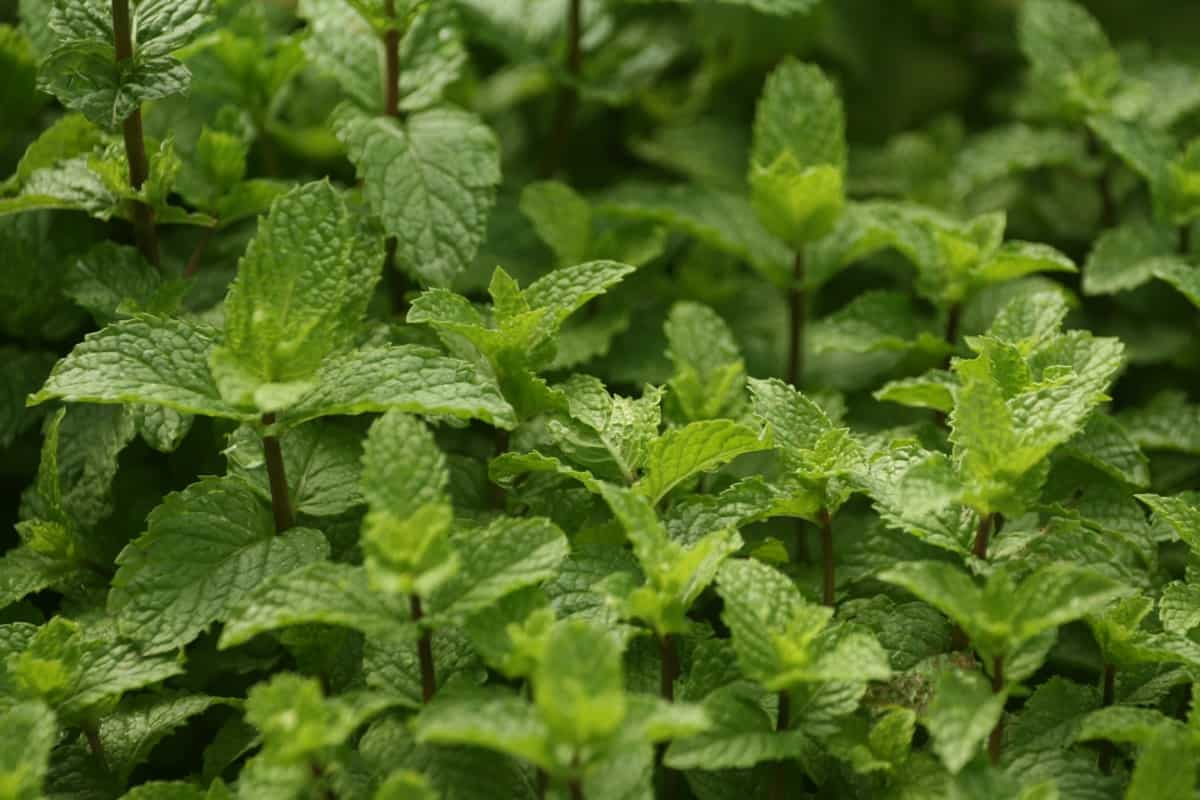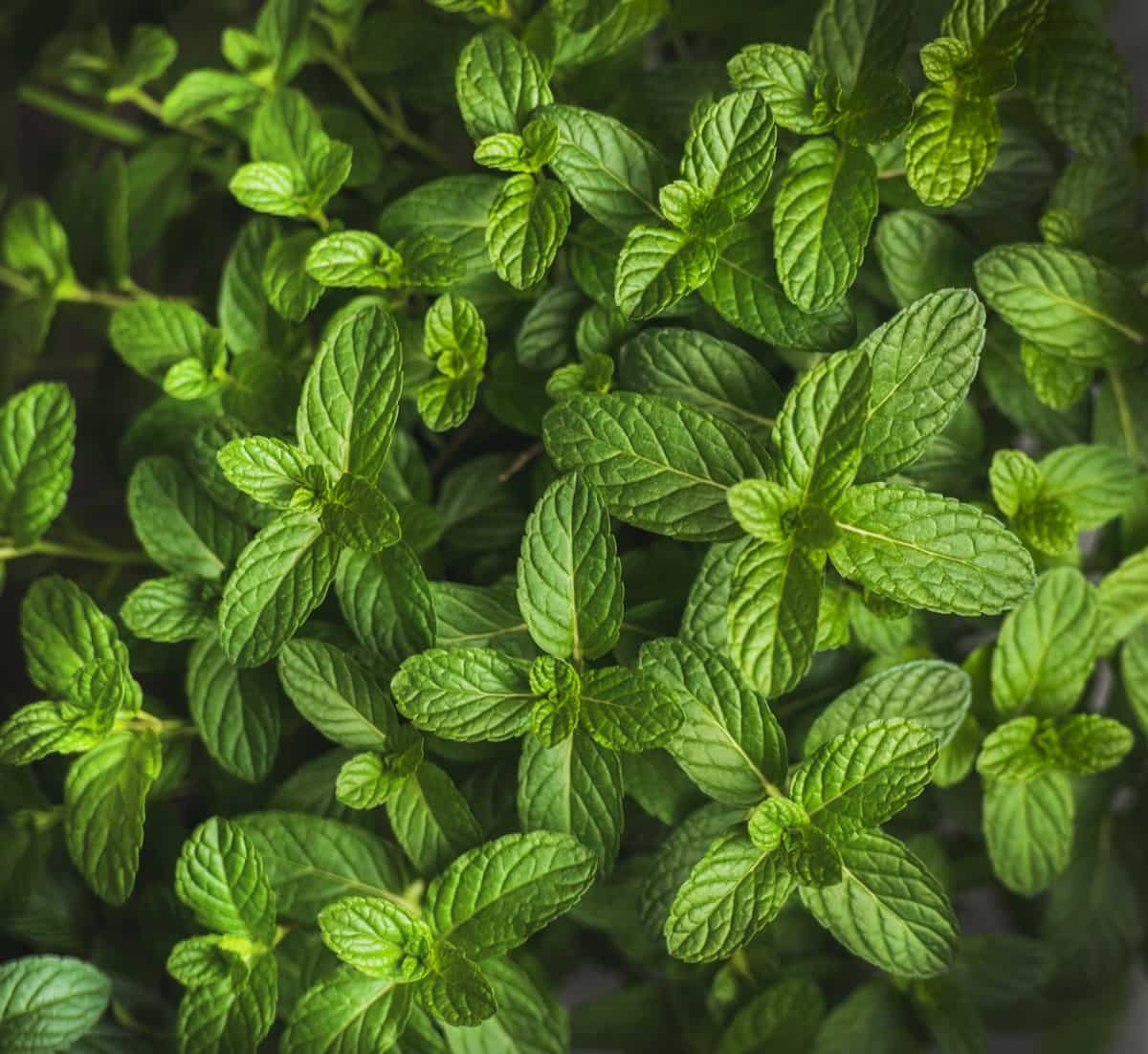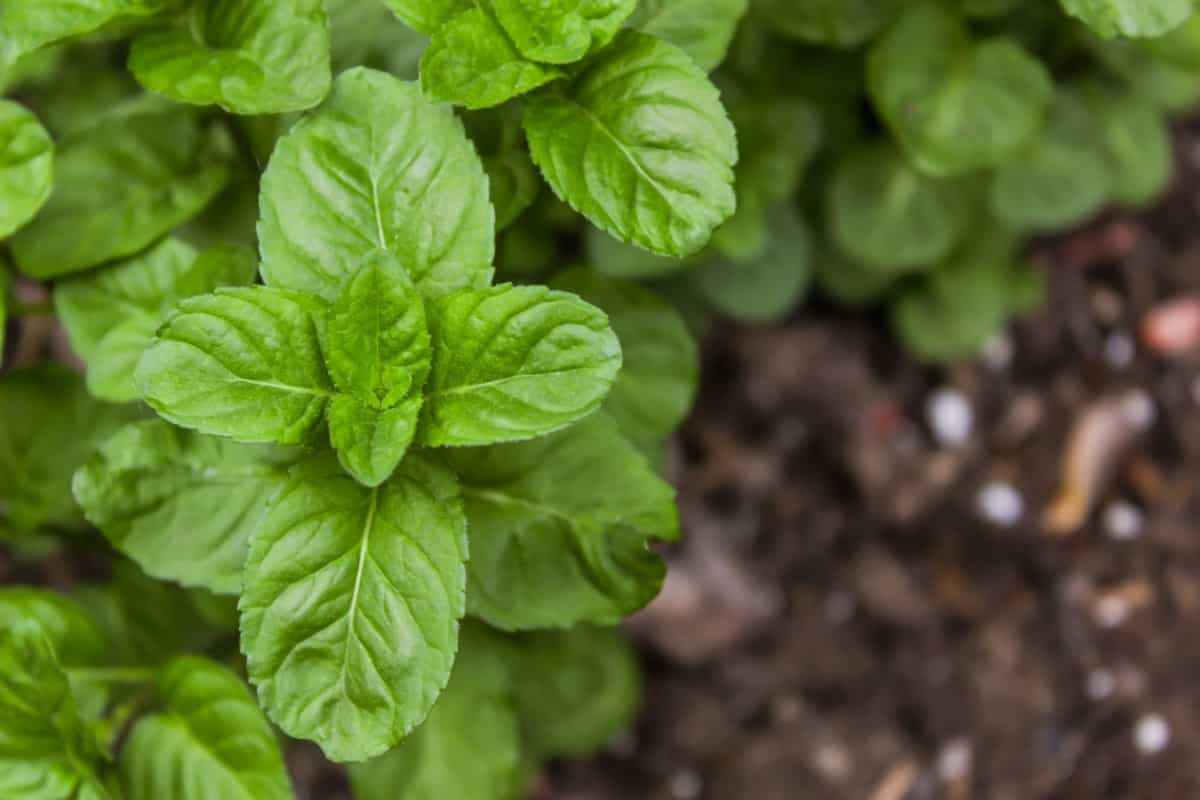Organic Peppermint is incredibly easy to grow, making it an ideal gardener choice. With its hardy nature and adaptability, this aromatic plant is grown in various climates and soil conditions. With its invigorating aroma and refreshing taste, this versatile herb can be easily grown at home, allowing you to enjoy fresh leaves throughout the year.

How to Grow and Care for Organic Peppermint
Choosing the Best Organic Soil for Peppermint Plants
Choosing the right organic soil for your Peppermint plants is important to their growth and overall health. Peppermint thrives in rich, well-draining, acidic soil with a pH between 6.0 and 7.5. When selecting organic soil for Peppermint, look for options specifically formulated for herbs or vegetables. These soils usually contain a balanced combination of organic matter and essential nutrients like nitrogen, phosphorus, and potassium.
Before planting your Peppermint seeds or seedlings, prepare the soil by removing any weeds. This will help the roots penetrate easily into the ground. To maintain optimal soil conditions throughout the growing season, consider mulching around Peppermint plants using hay or straw. This will help conserve moisture and suppress weed growth.
Growing Organic Peppermint from Seeds
Sowing Peppermint seeds is the first step toward growing organic Peppermint plants. To ensure successful germination, following the proper seed-sowing process is important. When sowing Peppermint seeds, you should aim to plant them approximately 1/2 to 1/8-inch deep into the soil. This depth allows optimal contact with the soil while providing enough space for the seedling to emerge. It’s recommended to sow the seeds anytime from May through July when temperatures are warmer and more favorable for germination.
As your Peppermint seedlings grow and reach a height of around 2 inches, thinning becomes necessary. Thinning involves removing excess seedlings to provide ample space for each plant’s root system to develop fully. Doing this allows sufficient airflow and prevents overcrowding that can lead to disease or stunted growth. Once thinned out, transplanting your Peppermint seedlings is crucial for their continued development. Planting them about 12 inches apart provides ample room for each plant’s roots to expand and prevents competition among neighboring plants.
Step-By-Step Instructions for Growing Organic Peppermint
Choosing the Right Location – Peppermint thrives in full sun or partial shade, so select a location that receives 6 hours of sunlight daily. Also, ensure that there is good air circulation around your plants.
Sowing the Seeds – To start growing organic Peppermint, sow the seeds approximately 1/2 to 1/8 inch deep in well-draining soil. The best time for sowing is from May through July. Make sure to keep the soil moist but not constantly wet.
Thinning and Transplanting – Once your Peppermint seedlings reach a height of about 2 inches, it’s time to thin them out. This removes some of the plants to allow more space for growth. Space the remaining seedlings about 12 inches apart.
Watering and Fertilizing – Water your Peppermint plants regularly, keeping the soil moist but not waterlogged. Organic growers often add well-rotted manure before planting and supplement it with additional manure throughout the growing season for optimal growth.
In case you missed it: How to Grow Mint from Cuttings: DYI in 10 Simple Steps

Natural Pest Control – To protect organic Peppermint from pests without harmful chemicals, consider companion planting with beneficial herbs like basil or marigold. These can deter insects naturally while attracting pollinators.
Harvesting and Drying – When your Peppermint reaches its peak flavor, it’s time to harvest. Cut stems just above a leaf node to encourage new growth. Hang bundles upside down in a dry place until fully dried, and store them in an airtight container for future use.
Natural Pest Control Methods for Organic Peppermint
One effective method for pest control is companion planting. Certain plants act as natural repellents for pests that commonly attack Peppermint. For instance, planting garlic or onions near your Peppermint can deter aphids and other insects. Similarly, marigolds attract beneficial insects like ladybugs which feed on harmful pests.
Another natural pest control method uses homemade sprays from common pantry ingredients such as neem oil, garlic, or chili pepper. These concoctions can be sprayed directly onto the leaves of the Peppermint plant to repel pests. By implementing these natural pest control methods for Peppermint, you can ensure the health and vitality of your organic Peppermint crop while maintaining an environmentally friendly approach to gardening.
Information about Growing Organic Peppermint
| Plant Name | Peppermint |
| Plant Type | Perennial herb |
| Family | Lamiaceae |
| Soil Type | Clay, loamy |
| Soil pH | 6.0-7.5 |
| Soil Drainage | Well-draining |
| Sunlight | Full sun to partial shade |
| Companion Planting | Broccoli, Eggplant, Cabbage, Carrots, Lettuce, Peas, Peppers |
Organic Fertilizers for Promoting Healthy Peppermint Growth
Organic fertilizers play a crucial role in promoting healthy growth for Peppermint plants. They add 30-40 tons of this nutrient-rich manure per hectare and plow the soil well before planting the young rootstocks. This initial application ensures that the soil is enriched with essential nutrients that will support the growth and development of the Peppermint plants. Throughout the growing season, these organic growers continue to add 15-20 tons of manure per hectare annually. Additionally, organic Peppermint growers understand the importance of irrigation after every manure application.
In case you missed it: Homemade Mint Spray for Pest and Disease Control: Recipe for Natural and Organic Benefits of Plants

Proper Watering Schedule for Organic Peppermint Plants
Proper watering of the Peppermint plant is important for healthy growth. These aromatic herbs thrive in moist soil, but they don’t like to be waterlogged. It’s important to know that Peppermint plants have shallow roots, so frequent and light watering is key. Water the Peppermint plant deeply once or twice a week during hot weather.
Preventing Diseases and Common Issues in Organic Peppermint Cultivation
One common issue that Peppermint growers face is fungal diseases. To prevent these diseases, proper airflow and drainage are crucial. Make sure to space your Peppermint plants adequately to allow for good air circulation and avoid overwatering. Another common problem in Peppermint cultivation is pest infestation. Aphids, mites, and cutworms are some pests that can attack your Peppermint plants. Implementing natural pest control methods like introducing beneficial insects or using homemade insecticidal sprays.
Additionally, nutrient deficiencies can occur if the soil lacks essential minerals for healthy plant growth. Conduct regular soil tests to identify deficiencies and amend the soil with organic fertilizers. Weeds can compete with Peppermint plants for nutrients and sunlight. Regular weeding is necessary to keep unwanted plants from overtaking your mint patch. By taking these preventive measures, you’ll be well on your way to successfully growing organic Peppermint while minimizing common issues that may arise during cultivation.
Companion Plants for Organic Peppermint and Their Benefits
- Chamomile: This fragrant herb complements Peppermint’s aroma and helps deter pests like aphids and spider mites.
- Thyme: Planting thyme near your Peppermint can help repel cabbage worms notorious for damaging mint plants.
- Marigolds: These colorful flowers act as natural pest deterrents by emitting a strong scent that repels harmful nematodes in the soil.
- Bee Balm: Known for attracting pollinators like bees and butterflies, planting bee balm near your Peppermint can increase cross-pollination, resulting in healthier plants with higher yields.
Harvesting and Drying Techniques for Organic Peppermint Leaves
When harvesting Peppermint leaves, choosing a sunny day when the plant is dry is important. Cut the stems about 1-2 inches above the ground using scissors or shears. Be sure not to remove more than one-third of the plant, as this can weaken its growth. After harvesting, gently rinse the leaves under cool water to remove any dirt or insects. Shake off excess moisture and pat them dry with a clean towel or paper towel.
In case you missed it: How to Grow and Care for Organic Lemon Mint: Guide for Planting to Harvesting

To preserve their flavor and aroma, you have two options for drying Peppermint leaves: air drying or using a dehydrator. For air drying, tie small bunches of mint together with twine or rubber bands. It typically takes about 1-2 weeks for them to fully dry. Once they crumble easily between your fingers, they are ready for storage. Once dried, store your organic Peppermint leaves in a container like a glass jar or resealable bags in a cool, dark place. Properly dried mint can retain its flavor for up to one year.
Conclusion
Organic Peppermint thrives in cool climates and moist soil conditions. It is a versatile and aromatic herb that can be grown easily in your garden. Taking care of organic Peppermint plants is crucial to ensure their health and vitality. The natural compounds found in organic Peppermint can provide various ailments and promote overall well-being.
- Ultimate Guide to Ossabaw Island Hog: Breeding, Raising, Diet, and Care
- Ultimate Guide to Juliana Pig: Raising Facts, Size, Diet, Care, and Lifespan
- Raising Lleyn Sheep: Disadvantages, Price, Uses, Characteristics, and Care
- Ultimate Guide to Meishan Pig: Breed Facts, Breeding, Raising, and Care
- Ultimate Guide to Teacup Pigs: Raising, Diet, Lifespan, Cost, and Care
- Guide to Raising Poll Dorset Sheep: Facts, Profile, Characteristics, Uses, and Care
- Ultimate Guide to Bighorn Sheep: Characteristics, Diet, Lifespan, Breeding, and Lifecycle
- Ultimate Guide to Raising Katahdin Sheep: Farming Facts, Breed Profile, Uses, and Care
- Ultimate Guide to Raising Oreo Cows: Belted Galloways Farming Facts, Profile, Uses, and Care